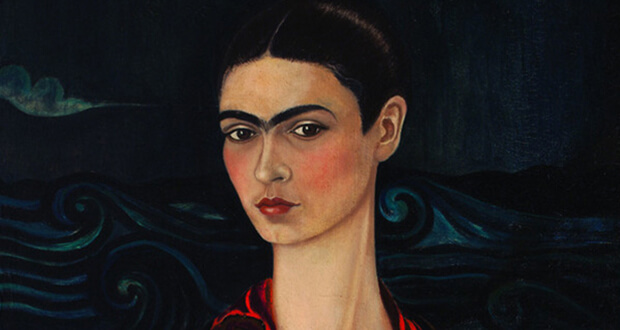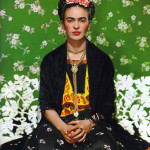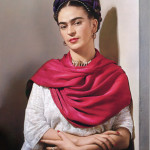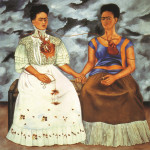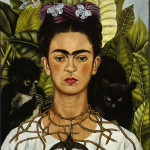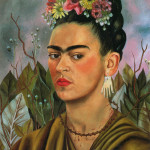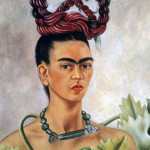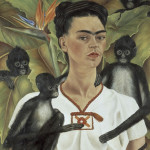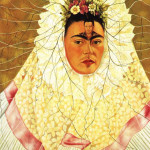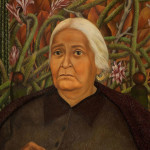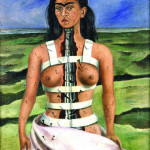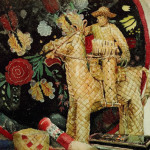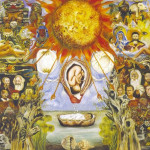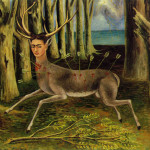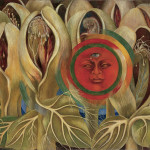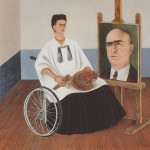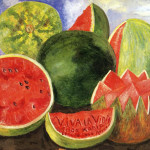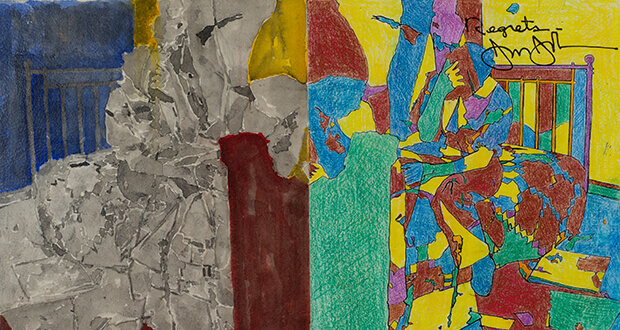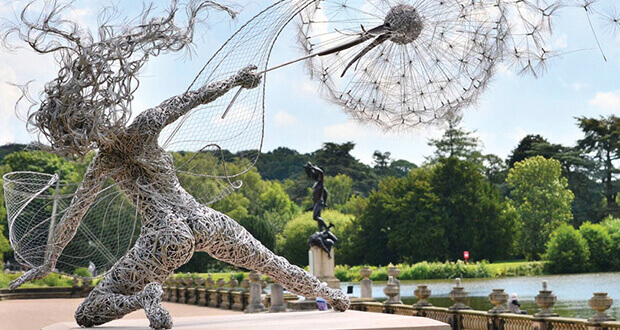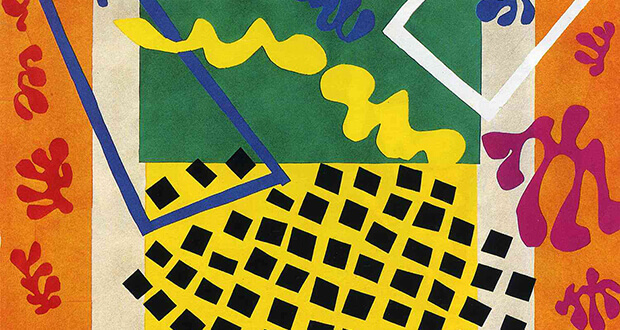Scuderie del Quirinale, Rome
From 20th of March to 13th July 2014 (update: postponed till 31th august)
[dropcap]H[/dropcap]onored and acclamed, up to be considered a contemporary myth, Frida Kahlo, with an eternal artistic charming and unique biography, is the icon of the Mexican culture and milestone for the feminist movement.
At the same time her paintings tell the story of her life and tie tightly to the story and the soul of Mexico of that period, bringing to light the cultural and social transformation that will antedate the Revolution. The painter overturns the tradition, showing a creative heart of her country, turning her personal pain into an art of life.
After a tragic accident occurred in 1925 when she was only 17 years old, on a bus that collided with a tram, she spent a lot of time immobilized in her bed. Frida, alone with herself, starts approaching the painting and, thanks to a mirror put on underside of her bed’s canopy, becomes her main model, turning unconsciously into a pioneer of the selfie.
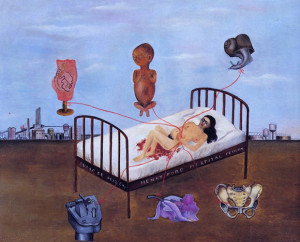
Frida has her own personal vision about the historical events of her people and arts. She creates a new pictorial language, never far away from herself, entirely based on reality. She preferred canvas of little dimensions, painting them with a richness of details, as if she was an inheritor of the Flemish school. With her exuberant personality, Frida married the famous Mexican painter Diego Rivera, a full devoted lover, wife and artist.
Disappointed by his betrayals, among which it can be counted one with her sister Cristina Kahlo, Frida paid him back in the same way, including some much-discussed Sapphic experiences. The spouses were lovers, a couple, activists and artists but most of all they inspired a wave of change in the modern Mexico. At the age of six, Frida suffered from polio that affected one of her legs and after the incident in 1925 Frida turned to be suffering, struggling with a lot of physical limits.
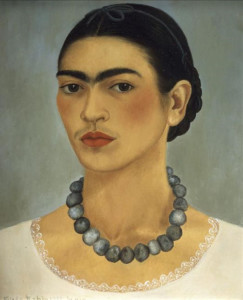
Who doesn’t remain touched after seeing one of her self-portraits, despites her unibrow and fluffy lips? An extraordinary creative soul also in the field of fashion and design. In Rome you can enjoy works from the most important international art collections, from Mexico to United States and Europe. There are also photographs from the famous photographer Nickolas Muray took in the early forties, precious to fully understand the personality of this complex woman. Paintings and self-portraits full of bright colors characterized her works. They express in full the vital energy of Mexico, a sort of continuous “Viva la Vida”, her motto before shed died in 1954. In her last works, she stopped drawing herself to start painting juicy fruits.
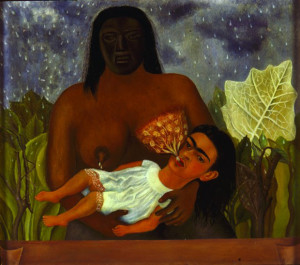
In the Parisian exhibition her works were admired by Juan Mirò, Kandinsky and Duchamp. The art critics acclaimed her uniqueness and honesty.
Pablo Picasso gives her a pair of earrings of turtle shell shaped like two little hands, becoming her favorite jewel.
When In the spring of 1938 André Breton went to visit Trotsky hiding in Frida’s house, he remain delighted by her works, as he called them, surreal paintings; she laughed at him and said: “No, they are autobiographical, I paint my life”. He didn’t understand that Frida’s life was pure surrealism and her paintings contains the folk Mexican art, mythology, religion, contemporary street and pre-Colombian arts, a mix never seen before. Few years before death, she got a leg amputation due to gangrene. The everyday life must appear to her without way out and that is way plants, flowers, insects where drawn with accuracy becoming a fetish and a symbol for a new life. Immortal in their genre.
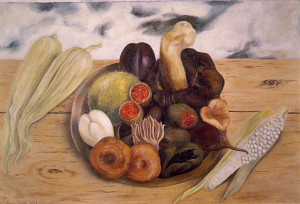
In the portraits Frida doesn’t idealize herself but praise with love her imperfect body, full of defects, , “ugly” but , alive. The soul survived to a suffering and tormented body. Her skulls are ready to wander among living people, with sarcastic smiles. The exhibition is going to show a woman of a natural beauty, with an only regret, the impossibility of becoming a mother, her wrong body displayed by Frida as the best trophy.
Gallery

